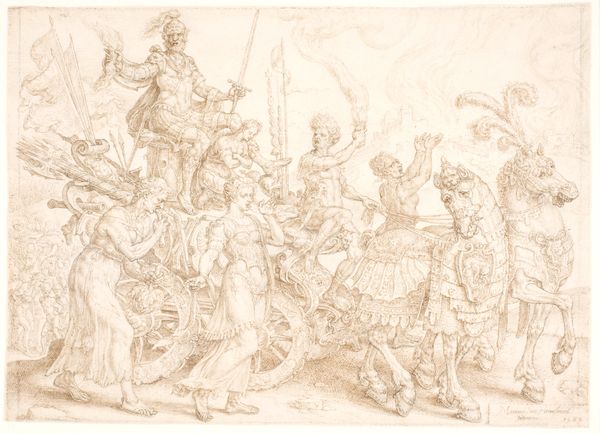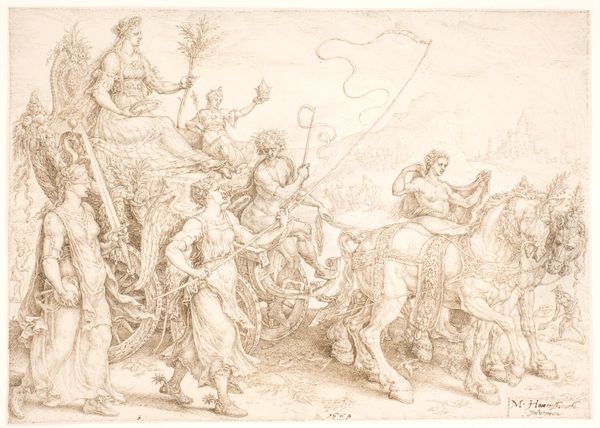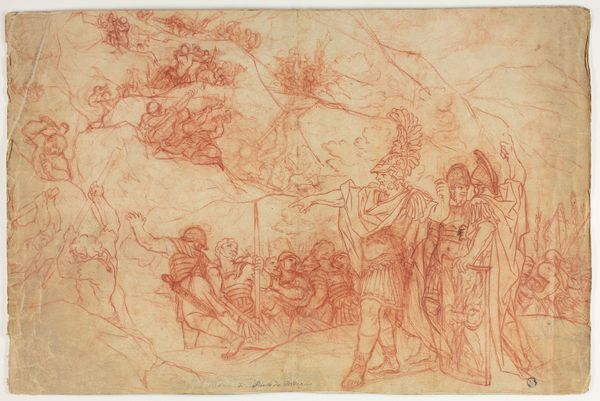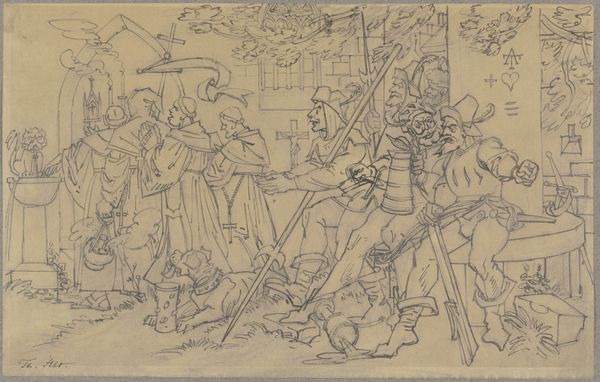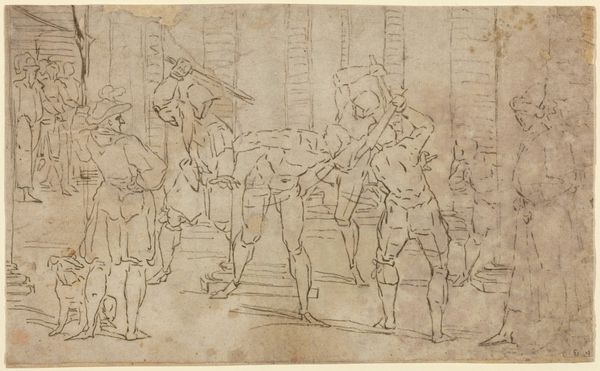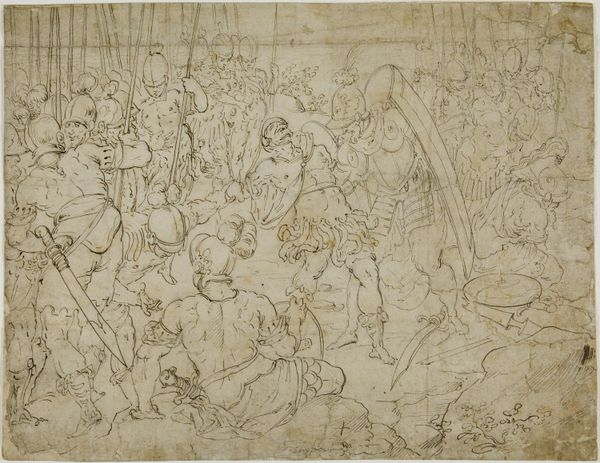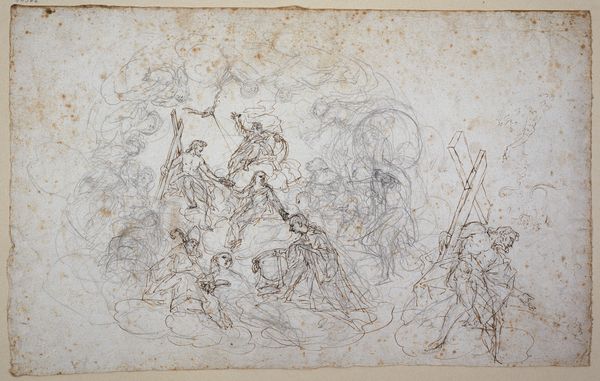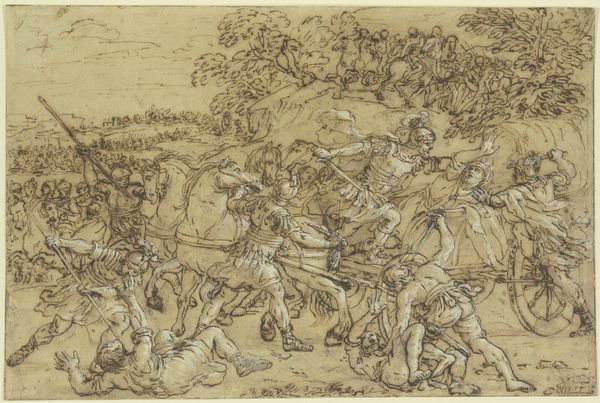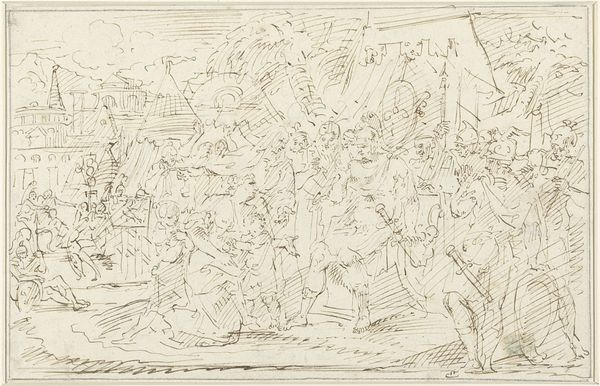
Ein junger Krieger ist im Begriff, ein Lager anzugreifen, Minerva verwehrt es ihm, sie ist umgeben von Wappen tragenden Nymphen und Amoretten
0:00
0:00
drawing, ink, pen
#
drawing
#
ink drawing
#
narrative-art
#
baroque
#
ink painting
#
figuration
#
ink
#
pen work
#
pen
#
history-painting
Copyright: Public Domain
Curator: This ink drawing, currently held at the Städel Museum, is by Gerard de Lairesse. Its title, "Ein junger Krieger ist im Begriff, ein Lager anzugreifen, Minerva verwehrt es ihm, sie ist umgeben von Wappen tragenden Nymphen und Amoretten", tells the story within the artwork itself—"A young warrior is about to attack a camp, Minerva prevents him, she is surrounded by coat-of-arms-bearing nymphs and cupids." Editor: My first thought is how chaotic, yet graceful, this tableau is. There’s a real tension between violence and serenity playing out, with these delicate lines rendering quite intense drama. Curator: Indeed. The Baroque style is evident here—look at the dynamism. Lairesse, though Dutch, was deeply influenced by French classicism. See how Minerva, goddess of wisdom and strategic warfare, embodies reason restraining impulsive aggression. That central grouping symbolizes the importance of prudence. Editor: It's compelling to see Minerva's intervention framed as preventing violence. This seems to argue for intervention as a path to peace. The cupid figures create such a striking juxtaposition with the war about to happen, and remind me of similar Baroque paintings of vulnerable male figures on the brink. It also prompts questions around themes of protection and who is really being served. Curator: And consider the emblems borne by the nymphs! These are more than decorative. Coats-of-arms traditionally symbolized power, lineage, honor… Their presence elevates Minerva’s stance; it suggests this isn't simply about preventing conflict but preserving a whole order of values and institutions. Editor: I wonder, then, whose order is truly being preserved here? Are we seeing a challenge to violence, or a reinforcement of a certain type of power structure, of those who decide what is permissible, using warfare or otherwise? Curator: An excellent point. And one could even see the cupids, symbols of love and peace, as perhaps representing a different, less hierarchical future. Editor: Exactly. Perhaps the message is not simply “violence is bad,” but more a call to question the systems that allow war, violence, and existing power dynamics to thrive in the first place. Curator: It shows that even centuries later, an artist's perspective remains open to countless interpretations, echoing across time. Editor: Precisely. By understanding historical contexts alongside contemporary theories, the artwork allows us to think critically about not only past values, but their potential echoes into current systems.
Comments
No comments
Be the first to comment and join the conversation on the ultimate creative platform.
